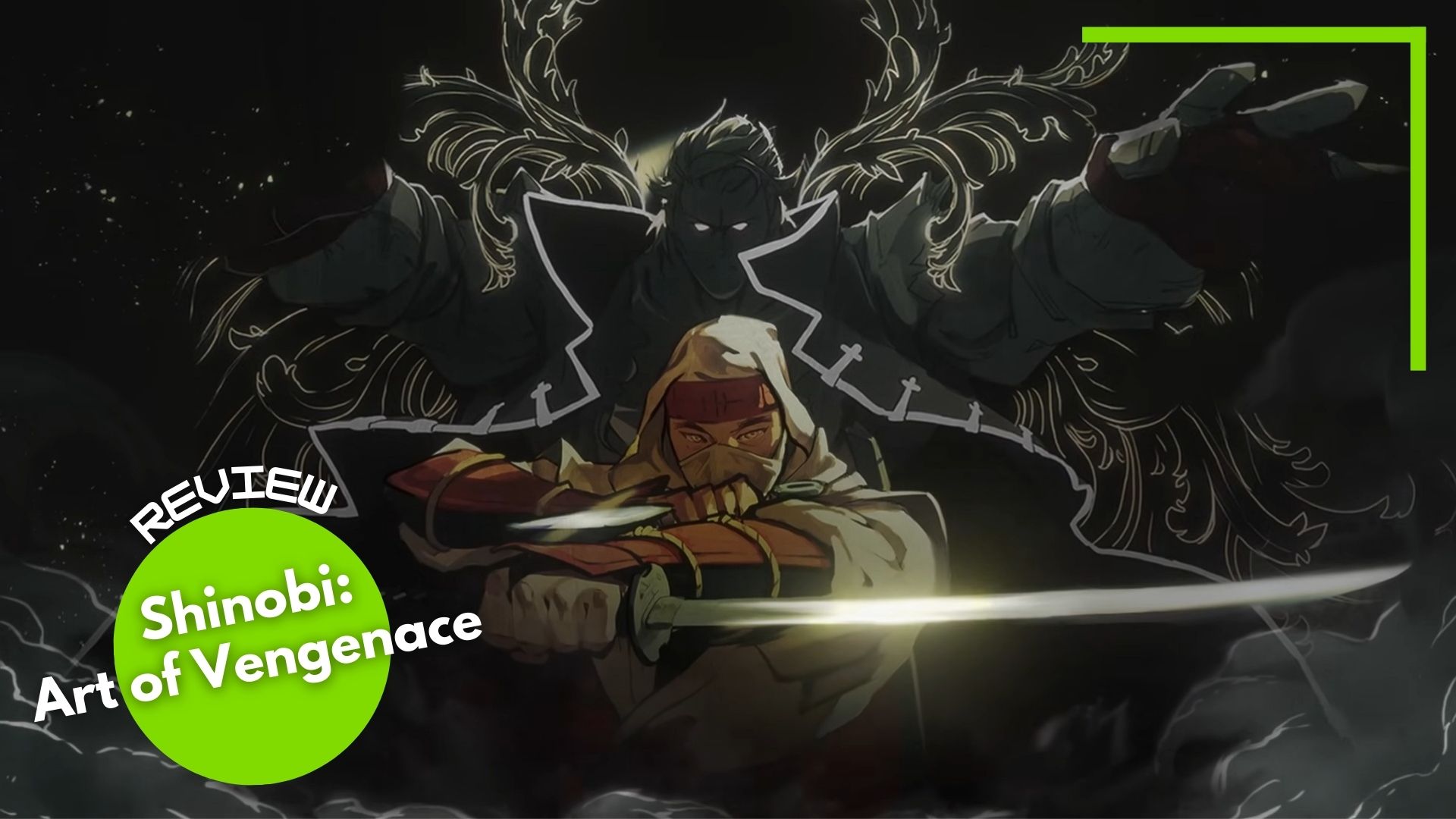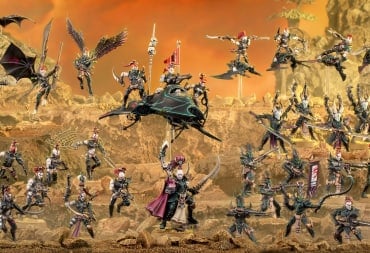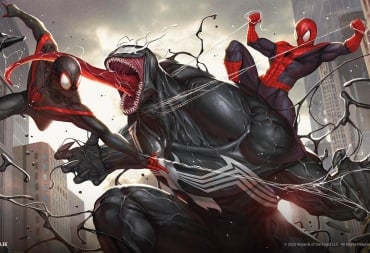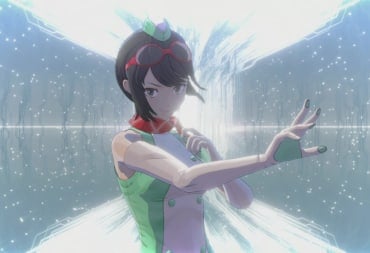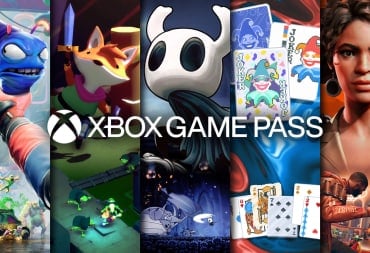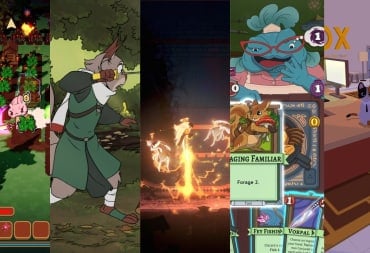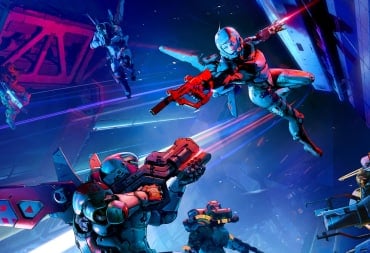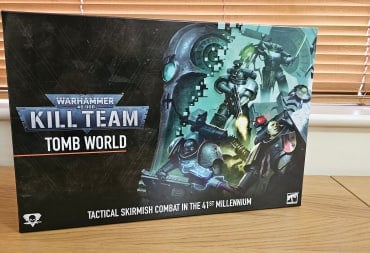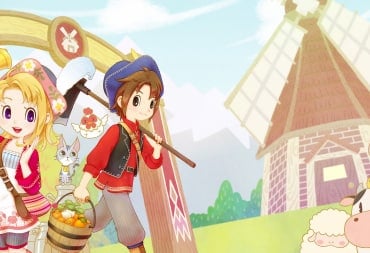It was during last year's The Game Awards that SEGA announced the revival of several classic IPs. Revivals included Golden Axe, Jet Set Radio, and more. The one that stood out to me the most, however, was Shinobi: Art of Vengeance, if anything, due to the excitement of this old-school series' fans.
Shinobi: Art of Vengeance is a gorgeous, hand-drawn 2D platformer with Metroidvania elements. It's my first foray into this longtime franchise, yet it serves as the perfect starting point for anyone interested in the adventures of Joe Musashi. Fluid combat with impeccable style makes this a triumphant return for the series.
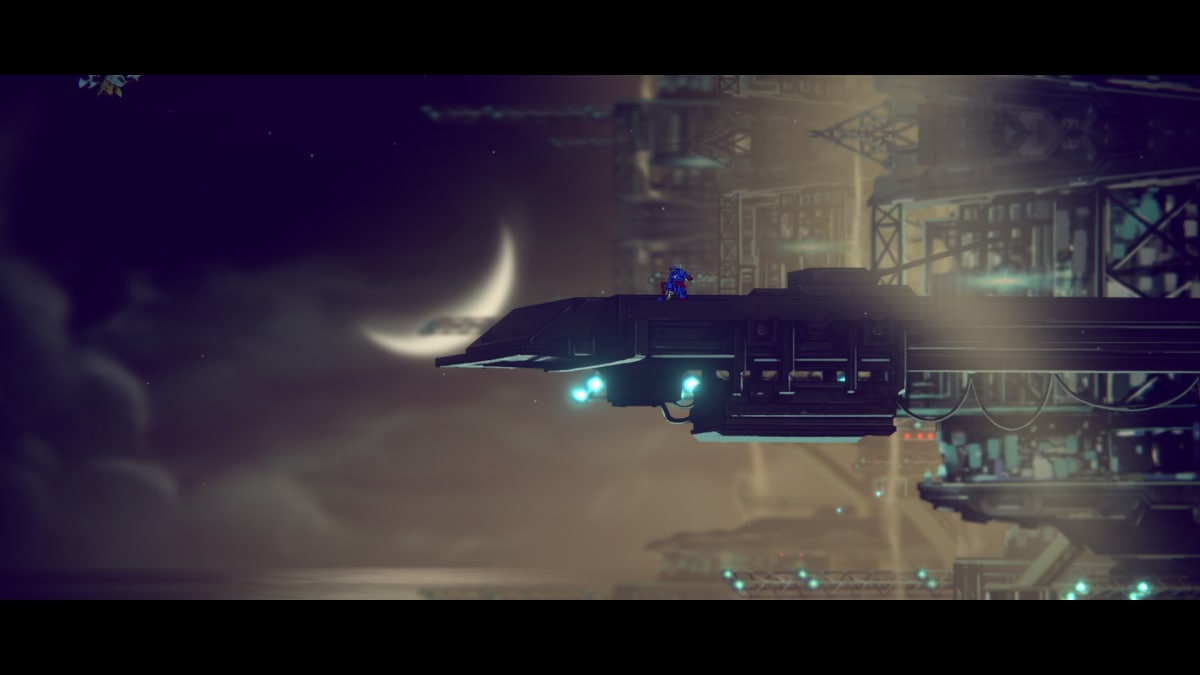
Return of the Legendary Joe Musashi
Legendary shinobi Joe Musashi is living a peaceful life in his ninja village, but suddenly his world is uprooted as everything he loves is burned to the ground. His pregnant wife is in danger, and only a few survivors remain from the aftermath wrought by the wretched ENE Corp and its leader, Ruse.
Thus begins your adventure. Through the flames, Joe Musashi furiously slashes through the invading ninjas. This introductory sequence makes for a strong prologue and immediately sets the tone for Shinobi: Art of Vengeance: A relentless, challenging, and exhilarating adventure on your quest for revenge.
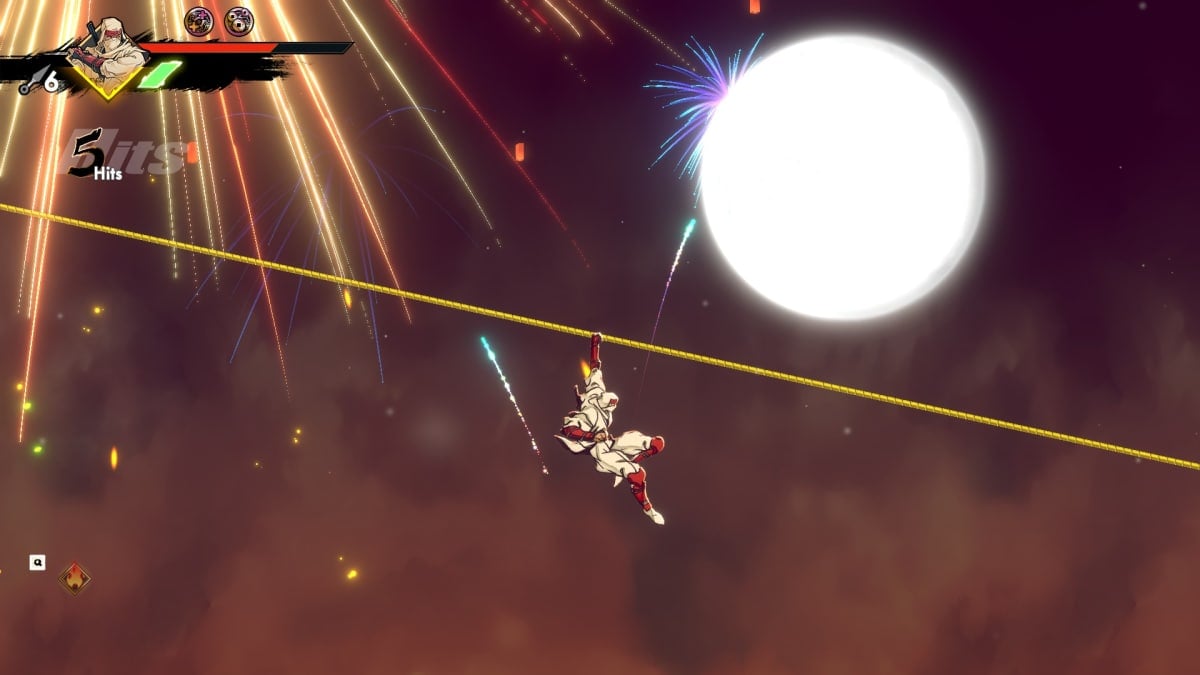
Joe Musashi is a very capable ninja; in fact, I see him in the same light as the deadly and efficient Ryu Hayabusa from Ninja Gaiden. Joe's a relentless force to be reckoned with, and Shinobi: Art of Vengeance's combat captures that feeling of power and expertise in the shinobi arts.
You're equipped with a myriad of abilities, and as you progress through a great variety of Metroidvania-like levels, you'll gain new abilities to help you combat stronger foes, as well as traverse new obstacles.
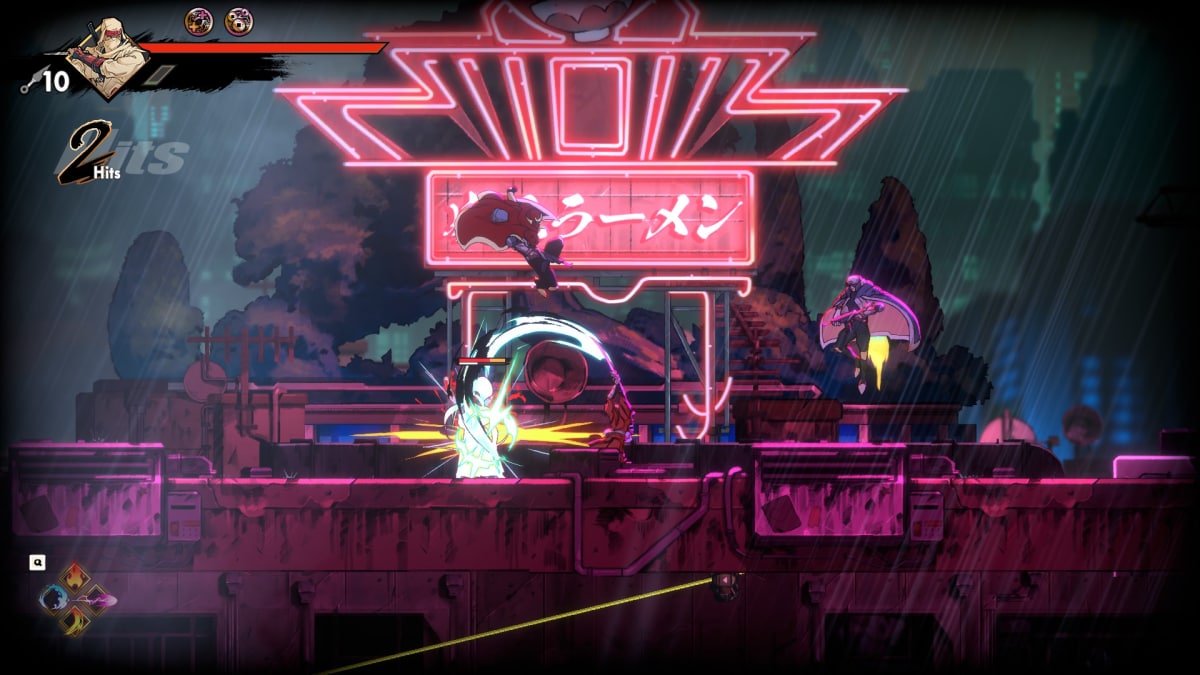
Combat Flows Like Water
It's been a good while since I've played a 2D game with combat this fluid. Joe moves like water as he weaves between foes. Dodging while in between attacks allows you to flow back and forth, continually attacking while also avoiding enemy moves.
As you gain more abilities and unlock additional moves, your ability to combo enemies expands greatly. Almost like a fighting game, or perhaps more appropriately a beat 'em up (the developer, Lizardcube, is no stranger to that genre), you can juggle enemies to increase your combo count.
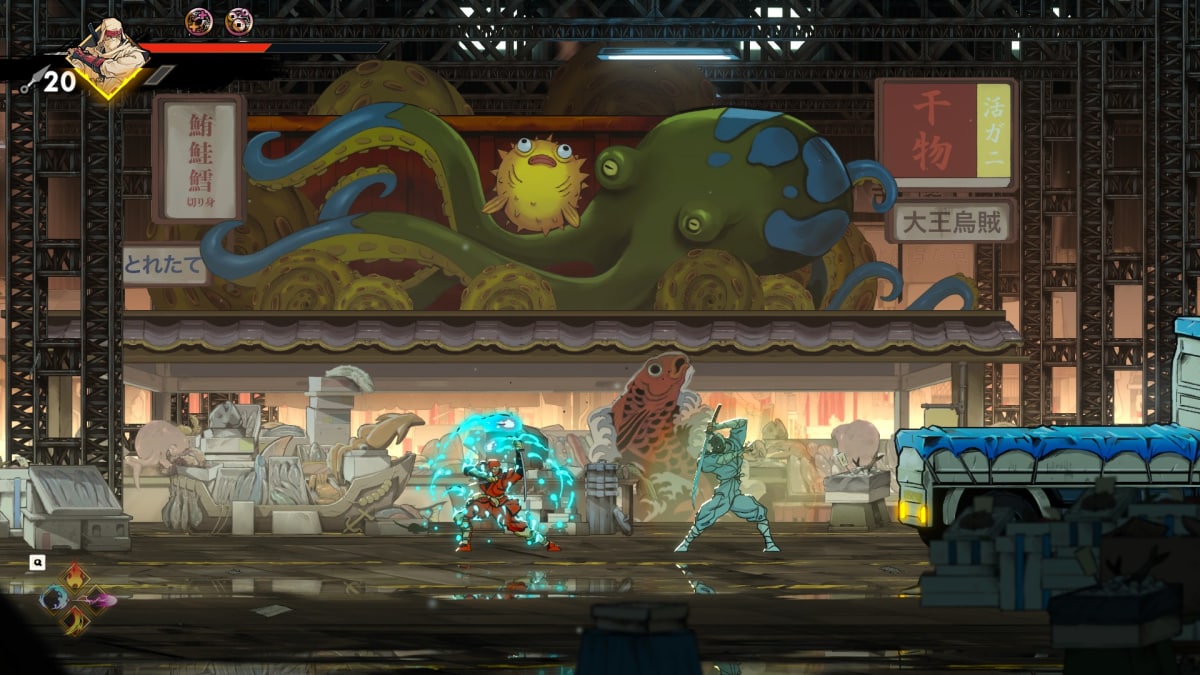
You're incentivized to keep up your combo and not get hit. Combo amulets are items that grant you various bonuses if you reach a certain combo count. Keeping that combo alive isn't necessary to succeed, but it's always a blast to see how high it can go while also being rewarded for your efforts.
There are also passive amulets that enhance your abilities; chiefly, your Ninpo and Ninjutsu. The former are spells that are mostly damage-based. These include fire breath, which is an easy-to-master damage ability. Some are more complex, like Water Ninpo, which is essentially a parry that retaliates with strong damage.
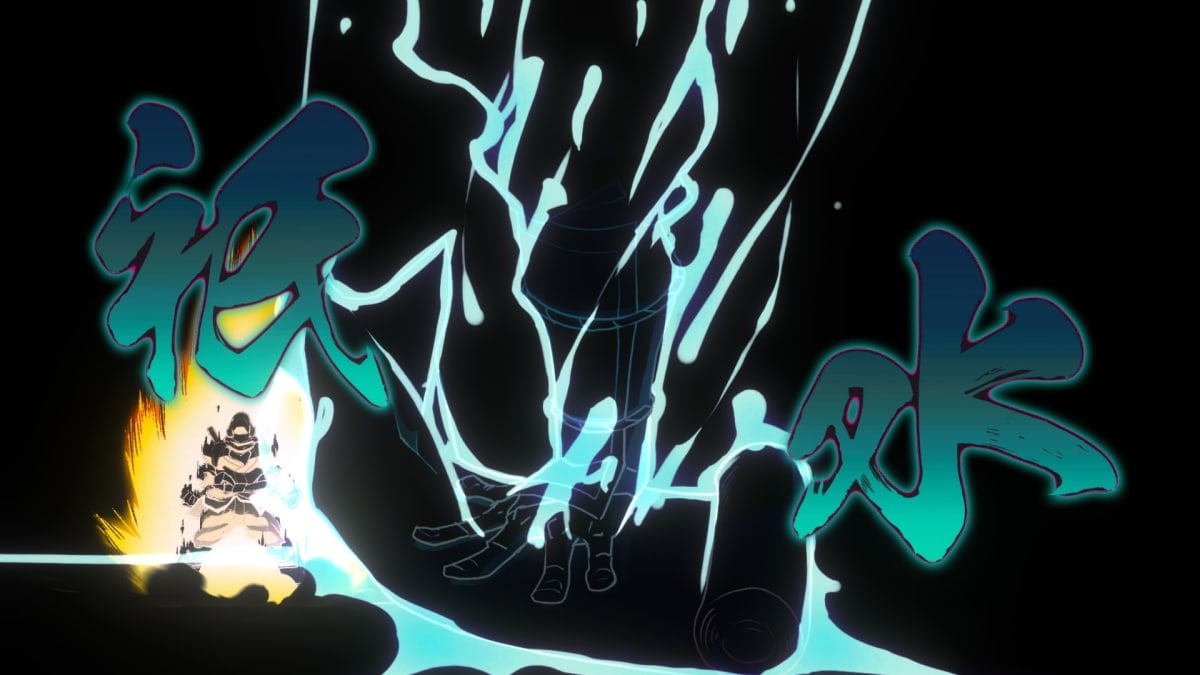
With eight Ninpo total, you have a good variety to choose from. Now, combine those with Ninjutsu, and you're a true force to be reckoned with. Ninjutsu takes longer to charge up and has devastatingly good effects: Karyu brings forth hellfire that consumes the entire screen, dealing huge damage to enemies and bosses.
Joe's toolkit also comes with Ningi. These include claws to traverse rocky walls and ceilings, a glider to float in the air, and a hook that latches onto anchors. With seven total, most of these are your typical Metroidvania upgrades; essentially, tools that help you get to previously unreachable areas.
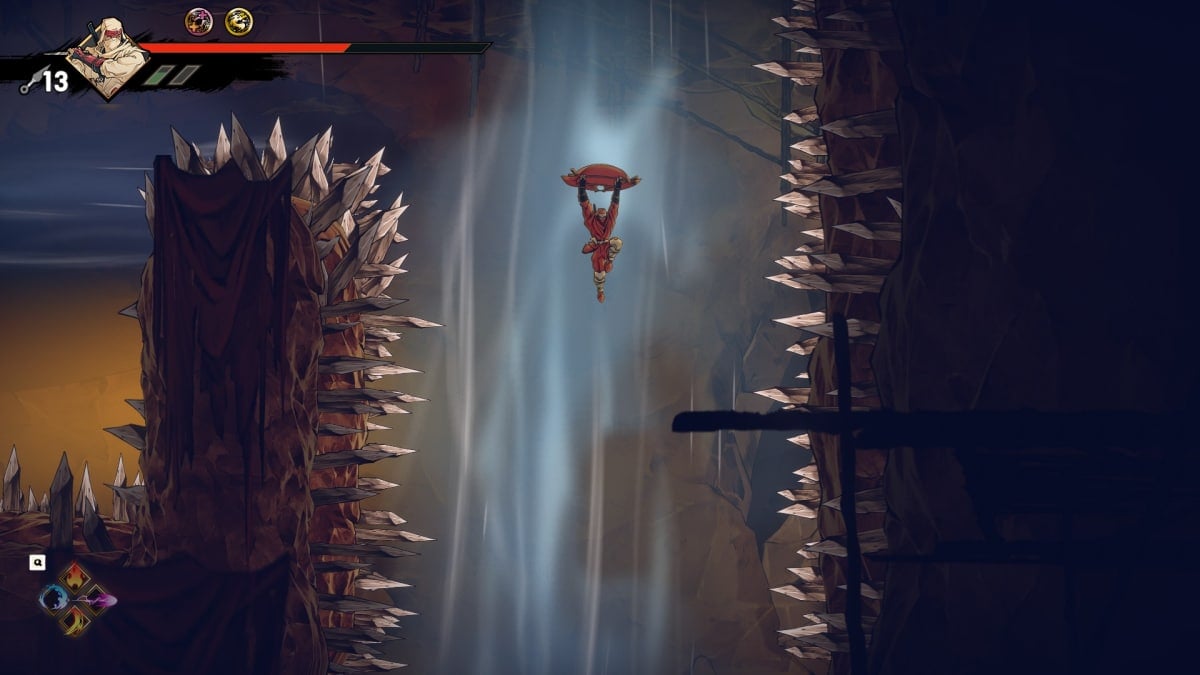
Is Shinobi: The Art of Vengeance a True Metroidvania?
While I use the term Metroidvania, in truth, it's more that it borrows elements from this genre. Shinobi: Art of Vegeance doesn't take place within one huge area. Rather, it's level-based, so it'll take you from level-to-level with a boss at the end of each.
There will be areas you can't access immediately, and that's where Ningi comes in. Shinobi: Art of Vengeance is chock full of collectibles and items that'll aid you in your adventure, so going back to these areas with your new tools is advantageous.
A lot of these previously unreachable areas feature some of Shinobi: Art of Vengeance's most challenging platforming segments. Hazards are aplenty here, with sharpened spikes, fire, and other dangers lurking around every corner.
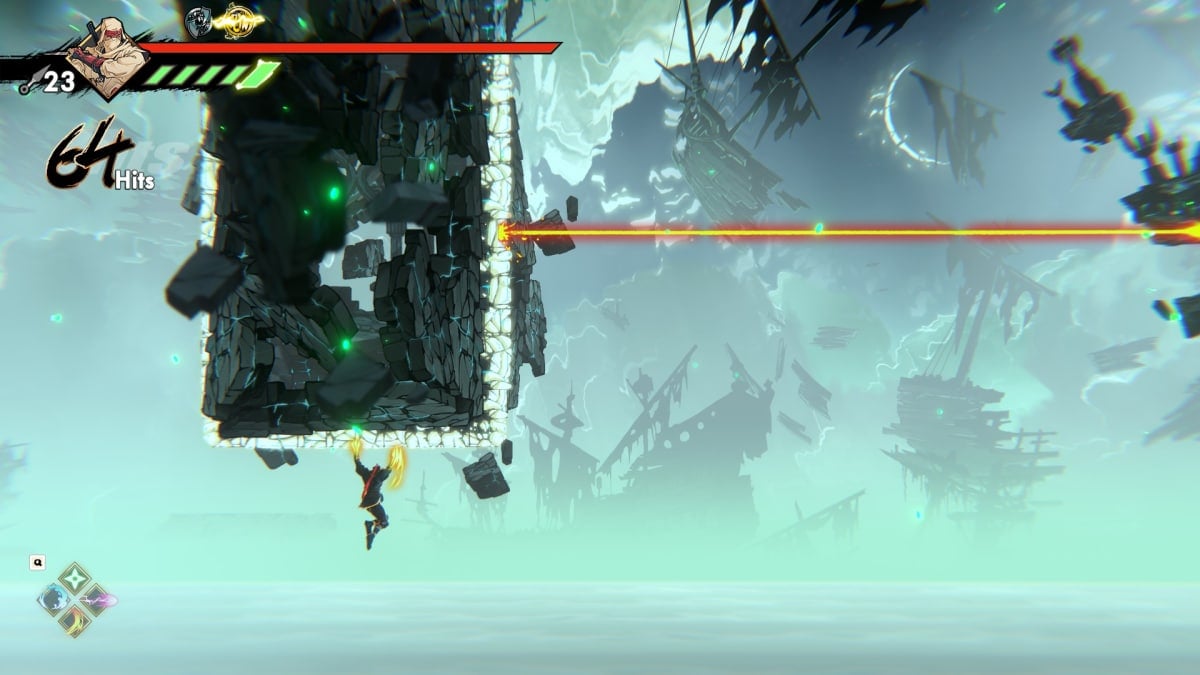
Platforming is pretty fluid, but I found myself frustrated with hitboxes. Platforming segments are well-designed, but many of my deaths felt like they weren't my fault.
Deceptive hit boxes on certain hazards felt frequent in some platforming-oriented challenge areas, so it was a true situation of trial and error. A lot of these segments use Joe's claws that latch onto ceilings and other objects, but the way he moves with these claws felt a tad too unrefined and led to my death.
This is all exacerbated by the deadly nature of hazards. They instantly kill you, or rather, they respawn Joe with a bit less health. But the checkpoints involving these can be inconsistent and lead to further frustration. When you're in the middle of combat with powerful foes and you die from a spike, it all ruins the flow a bit.
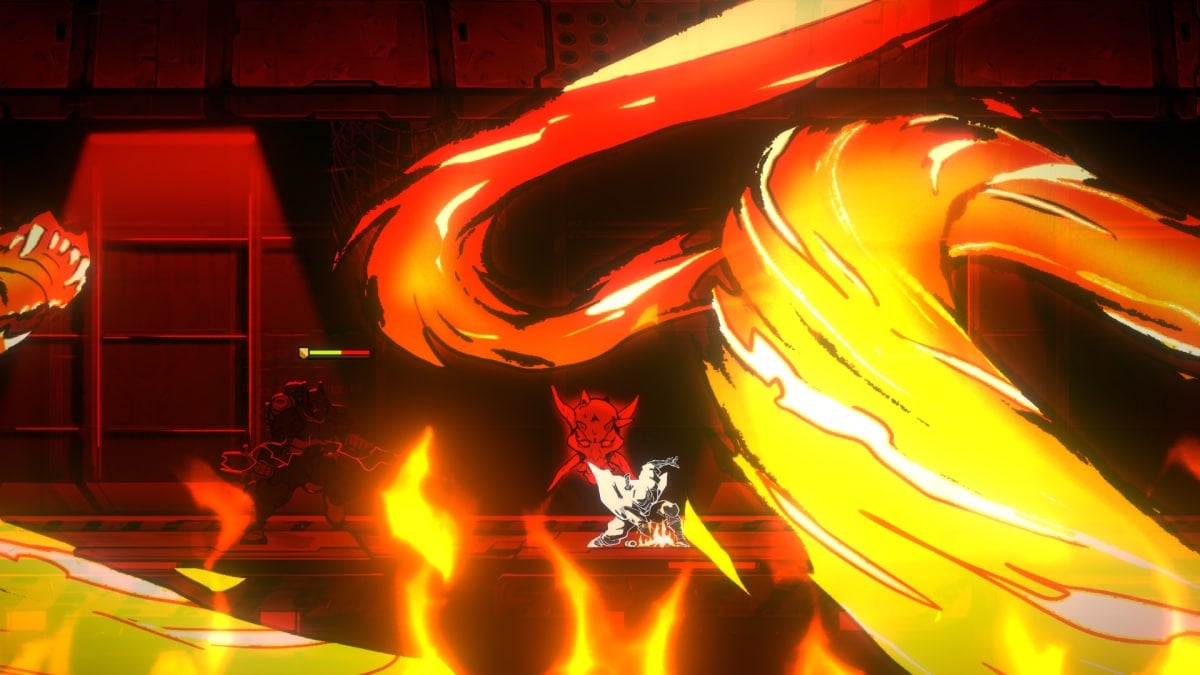
Bosses and Other Dangerous Foes
Even if some areas can be a tad annoying, Shinobi: Art of Vengeance does a good job of intermingling enemy encounters with creative placement of hazards.
As always, a proper shinobi takes advantage of all of his tools and skills. Some enemies have armor, so your abilities might be more focused on dealing damage to armor as opposed to health. It's up to you to learn these moves and use them when appropriate, and it's gratifying to absolutely dominate a wave of enemies, hardly stopping, as you traverse these levels.
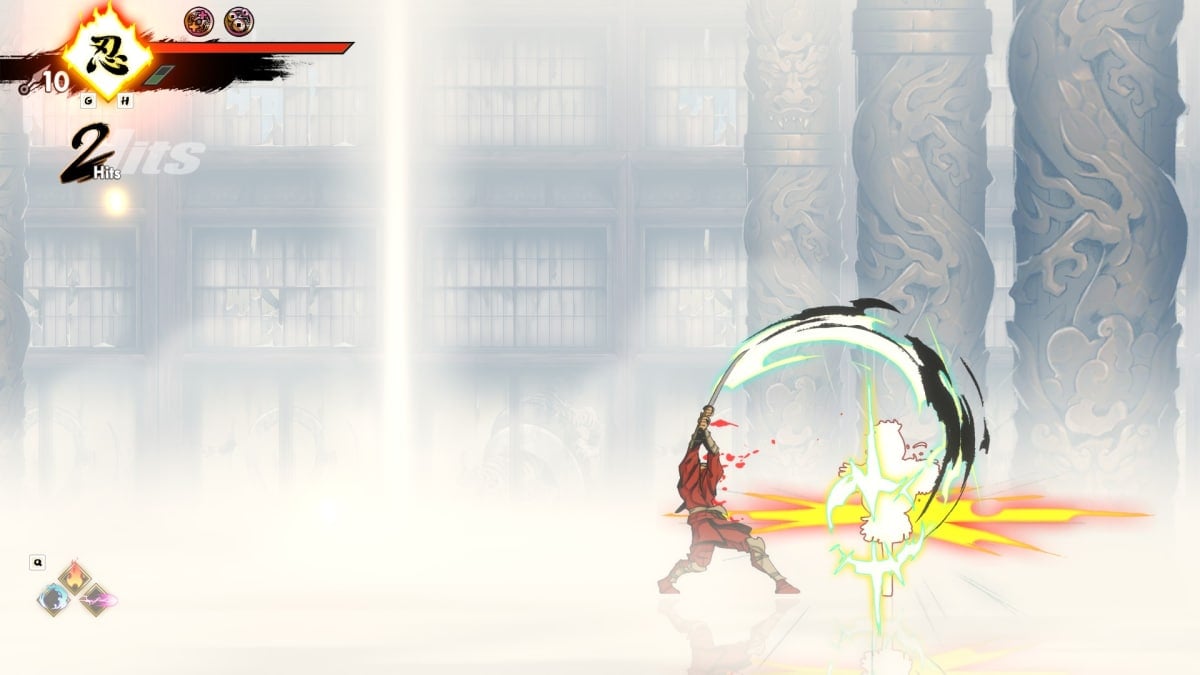
Most enemies, with the exception of bosses and some weaklings, have what's called an Execution Gauge under their health bar. Using your attacks gradually builds up this bar, and you can then execute them for additional rewards. Shuriken deal extra damage to the gauge, so I enjoyed throwing those in between attacks to further my combo and execute enemies.
I mentioned bosses, and yes, you'll face plenty of them here. In games with similar elements, these bosses can be hit-or-miss. I was pleasantly surprised by the depth of Shinobi: Art of Vengeance's bosses. They have a nice diversity in attacks, and most of them feel distinct from one another.
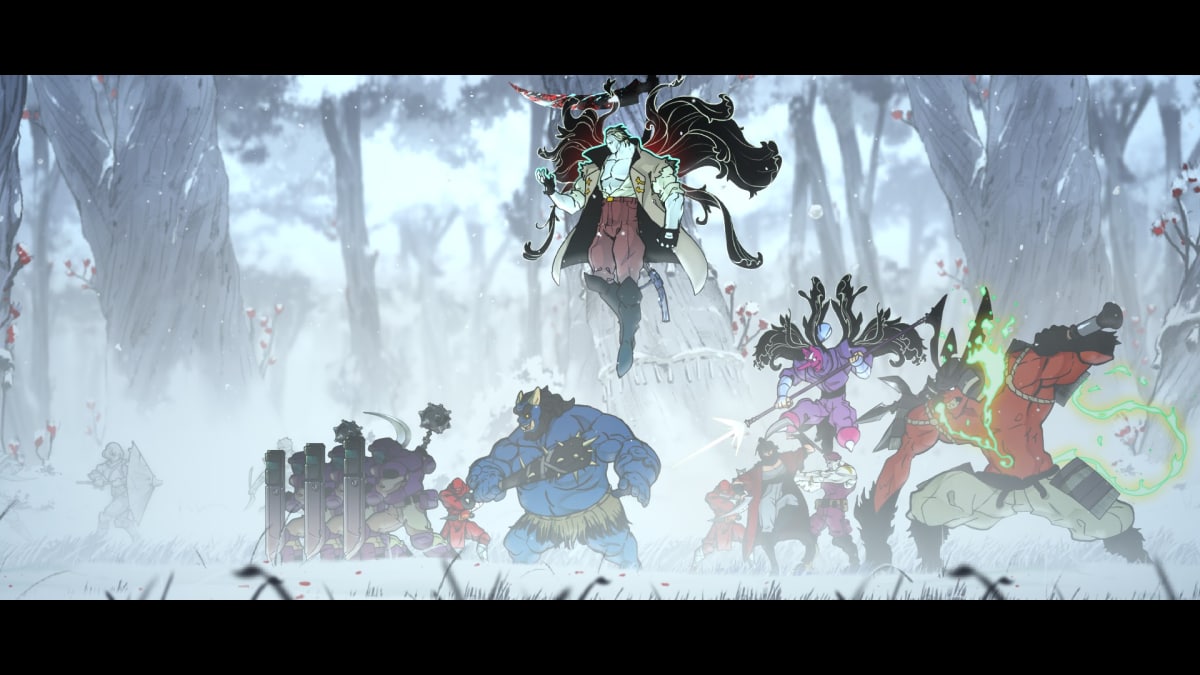
I especially appreciated the fact that you could just combo the hell out of some bosses. Learn a boss' move and utilize your full kit, and you'll be running circles around these guys. That's not to say they're without challenge -- they do have measures in place to counter Joe in some ways -- but once you get a grasp on the mechanics of combat, you have the potential to dominate these challenges.
Beat Shinobi: Art of Vengeance, and you'll gain access to the Boss Rush and Arcade modes. Boss Rush is an uncompromising tour through all of the game's bosses. There are no safeguards here. Die, and you'll have to redo the whole gauntlet. Those looking for a greater challenge will definitely enjoy this mode.
Likewise, Arcade is a more traditional take on the genre. The level layouts remain the same, but you're aiming for a high score. As this is more old-school, you're not able to quickly travel across levels by choosing a checkpoint. Again, this is another good way to challenge players, though something like a global rankings for scores would be nice to see.
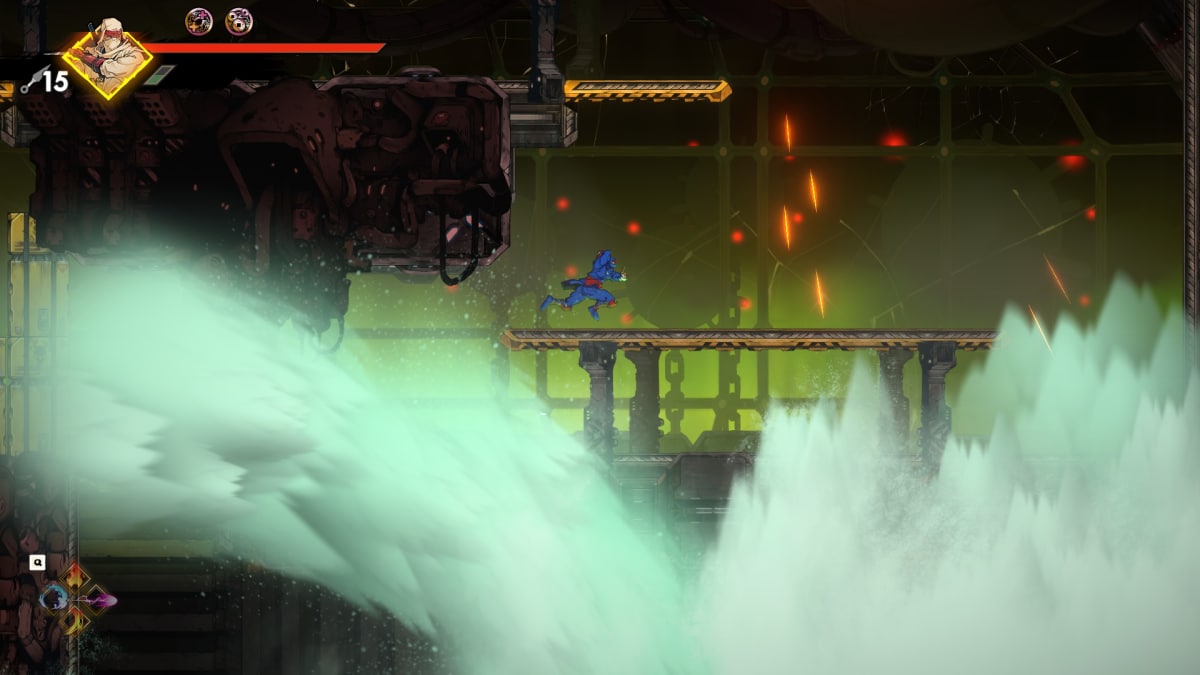
Shinobi: Art of Vengeance is a Sight to Behold
I mentioned this before, but Shinobi: Art of Vengeance is breathtakingly beautiful. The hand-drawn visuals are expertly animated and complement the sort of traditional Japanese aesthetic perfectly. Of course, Joe Musashi is a ninja of the modern era, so you'll find plenty of different locales outside of the classic Japanese countryside.
That includes neon-soaked cities, underground laboratories, arid deserts, and much more. These levels all have a distinct feel from one another, and art design plays a huge part in that. The backgrounds of these stages are beautifully drawn and packed with a ton of detail, so it truly is a feast for the eyes.
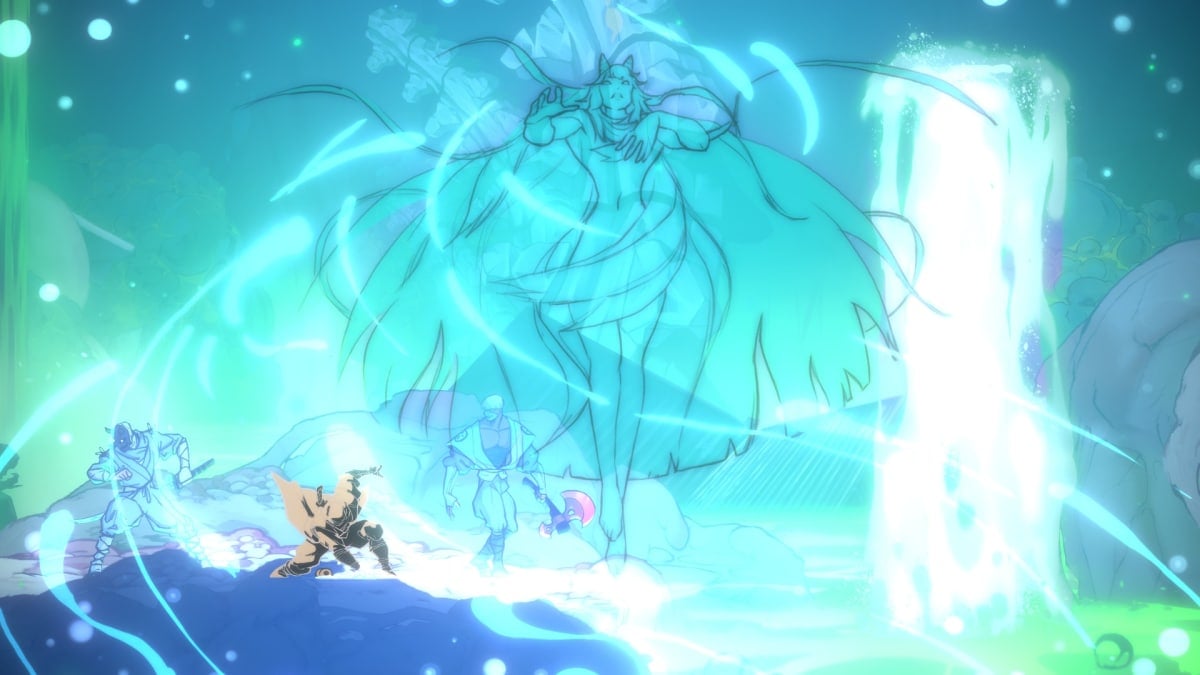
What stands out the most about Shinobi: Art of Vengeance's art design is when Joe uses his various abilities. Every attack has weight and flair. Ninjutsu are the highlight here, though. Whether it's that fire move Karyu I mentioned, or Shisui, a water-based healing move, the whole screen is consumed with some of the finest animation and art in gaming.
Besides its visuals, Shinobi: Art of Vengeance is accompanied by a wonderful soundtrack by Tee Lopes. For this game, he infuses traditional Japanese instruments with more contemporary electronic instruments. The intermingling of Japanese instruments with modern rock-and-roll and electronic music is a similar approach to the recent Ninja Gaiden: Ragebound, though I'd say Shinobi: Art of Vengeance is going for something more modern.
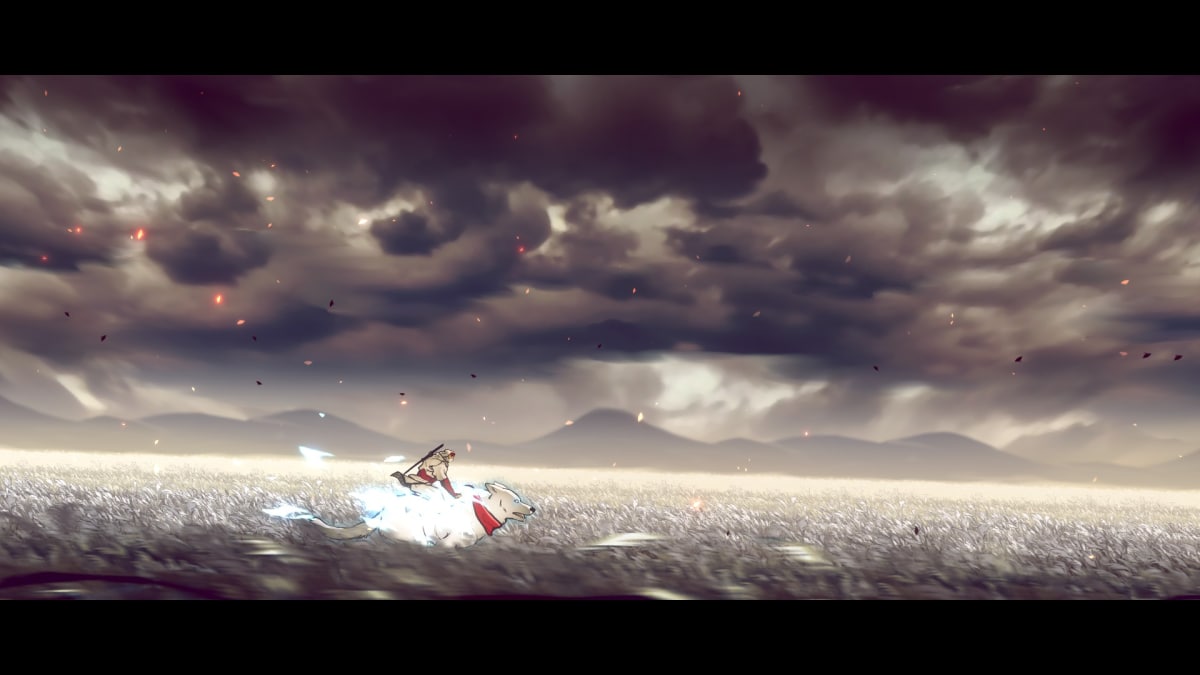
Shinobi: Art of Vengeance Review | Final Thoughts
A lot of fellow writers in my field have been gassing up Shinobi: Art of Vengeance since Summer Game Fest Play Days last June, so I was excited to see what all the hubbub was about. I see it now. It's fast. Exhilarating. Deadly. Cutting edge. Fans of ninjas, platformers, or games with plenty of combo potential will certainly love Shinobi: Art of Vengeance.
Shinobi: Art of Vengeance was reviewed on PC with a copy provided by the developer over the course of 14 hours of gameplay - all screenshots were taken during the process of review.
Review Summary
Pros
- Exciting Combat With Plenty of Depth
- Metroidvania Layout of Levels Actually Works Well
- Diverse and Creative Boss Battles
- Impeccable Art Style and Wonderful OST
Cons
- Hazard Hitboxes Can Feel Unreliable
- Controls for Platforming Segments (Especially When Claws Are Used) Need Refinement
